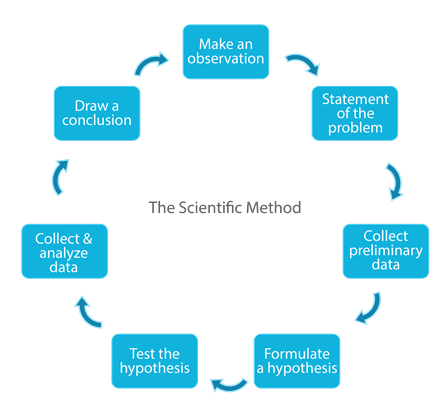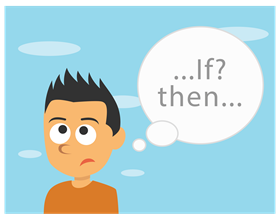Objectives
At the end of the lesson, you should be able to:
- describe the steps of the scientific method; and
- apply the steps of the scientific method to different scenarios.
Scientific Method
It is a series of organized steps that are taken to answer a question or solve a problem.
1. Make Observations
- Observation is a way of acquiring information using the five senses.
- There are two types of observations:
- Qualitative observations are observations from the five senses.
- Quantitative observations are numerical values obtained from measuring tools.
2. State the Problem
- In this step, you need to define the problem that you want to solve or know.
- The problem is usually in the form of a question.
3. Collect Preliminary Data
- Once you know the problem that you want to answer, you should read about it.
- Analyze the facts and data that you collect, and look for trends or patterns.
4. Formulate a Hypothesis
- After collecting the necessary information, a possible answer derived from the collected information is formulated.
- The possible answer is called a hypothesis. A hypothesis is an educated guess that may lead to a possible solution to the problem.
- Commonly, a hypothesis is stated as a cause-and-effect relationship making it testable.
5. Test the Hypothesis
An experiment is performed to validate the hypothesis.
- A controlled experiment is designed to test the effect of a change in a condition. These conditions or factors that affect the outcome of an experiment is called a variable.
There are two types of variables:
- The independent variable is the value that is being changed or manipulated.
- The dependent variable is the factor that changes relying on the change in the independent variable.
If the dependent variable increases as the independent variable increases or the dependent variable decrease as the independent variable decreases, they are said to be directly proportional.
If the dependent variable decreases as the independent variable increases (or vice versa), they are said to be inversely proportional.
6. Collect and Analyze Data
- The data from the experiment will either support or oppose your hypothesis. Just like in the observations, data gathered may be qualitative or quantitative. Data are usually presented in tables.
7. Draw a Conclusion
Does the data support or invalidate the hypothesis? If the data support the hypothesis, then the problem is solved. The study should then be shared with other scientists to spread the information. Other scientists may also work on your hypothesis to further support your study.
If the data otherwise opposes the hypothesis, this does not mean that the experiment is a failure. Knowledge is still gained if a hypothesis is not supported by an experiment. If this happens, a new hypothesis can be made and another experiment may be designed.
Key Points
- The scientific method is a series of organized steps that are taken to answer a question or solve a problem. The steps of the scientific method are:
- Make observations.
- Statement of the problem.
- Collect preliminary data.
- Formulate a hypothesis.
- Test the hypothesis.
- Collect and analyze data.
- Draw a conclusion.
- A hypothesis is an educated guess that may lead to a possible solution to the problem.
- An experiment is performed to validate the hypothesis.





Comments
Post a Comment